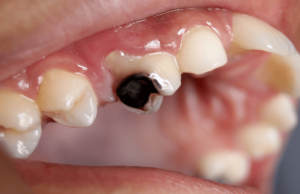 If you want to save your tooth and avoid root canal procedure, then dental fillings are necessary. Proactively addressing the tooth decay is the key to preserve the integrity of your teeth and gum. A dental filling is a procedure done to protect the teeth against further damage caused by the cavities and to restore its appearance and function. The replacement material called filling can be made of gold, silver amalgam, porcelain, and composite resin. Many prefer composite resin for aesthetic reasons. However, each material has its own advantages and disadvantages, and the dentist in Kellyville is the right person to determine which material is suitable for a person.
If you want to save your tooth and avoid root canal procedure, then dental fillings are necessary. Proactively addressing the tooth decay is the key to preserve the integrity of your teeth and gum. A dental filling is a procedure done to protect the teeth against further damage caused by the cavities and to restore its appearance and function. The replacement material called filling can be made of gold, silver amalgam, porcelain, and composite resin. Many prefer composite resin for aesthetic reasons. However, each material has its own advantages and disadvantages, and the dentist in Kellyville is the right person to determine which material is suitable for a person.
What exactly involves in tooth filling?
Tooth filling procedure involves the removal of damaged or decayed portion of a tooth and space is filled with a material that prevents from further damages. The majority of the Australians develop cavities at some point in their lives as they consume double the amount of recommended sugar. The filling treatment consists of two stages – first, the Kellyville dentist cleans out the infected tooth by removing the damaged part of a tooth and then the tooth is sealed with the material to provide additional support, strength, and prevent further infection to the tooth pulp.
You can choose to have a tooth coloured composite filling or silver amalgam filling. Both the type of fillings is an ideal choice. However, as the composite filling looks like a natural tooth colour many prefer it for aesthetic reasons. When compared to tooth extraction and root canal procedure, dental fillings are relatively inexpensive and can be completed in a single Kellyville dental visit.
Tooth-coloured fillings can last for about seven years and silver fillings can last more than ten years. Tooth-coloured fillings give a natural appearance and often replace traditional silver fillings.
Tooth decay can make chewing difficult and painful. So, when you decayed teeth is filled you might find eating less painful.
What happens when a cavity is left untreated?
Cavities are bad news, but many tend to ignore as they don’t know how serious they can be if left untreated. Here are a few things that will happen if a cavity is not treated.
Large cavity
If a tooth is damaged due to decay and left untreated, it can allow bacteria to penetrate deeper into the tooth and allows the cavity increase in size. The bigger the cavity, the bigger problems you have to experience.
Nerve damage
If left untreated, the cavity can eventually damage your nerve. If the cavity is reached to the root, you have to undergo a root canal procedure or extraction.
Infection
It can also lead to infection. Dental infections are no joke and it can cause your jaw to swell and painful.
Treating a small cavity is easier and inexpensive. All you need is a dental filling to stop decay. If you have a cavity, contact your dentist.
